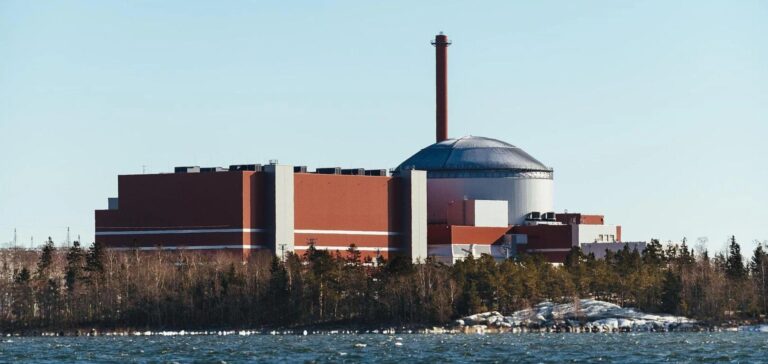After years of delay, Finland put its new French-designed EPR nuclear reactor into commercial operation on Sunday, just hours after Germany’s effective exit from civil nuclear power with the shutdown of its last plants. After 18 years of construction that turned into a never-ending soap opera, the Olkiluoto 3 nuclear reactor on the southwestern coast of Finland has completed its production test phase and is now fully operational, announced its operator, TVO.
New Finnish reactor: the most powerful in operation in Europe
Built by the French group Areva with the German Siemens, it becomes the most powerful nuclear reactor in operation in Europe. “Testing is complete and regular power generation has begun,” said TVO, which started commercial operation on Saturday night. Including the two existing old reactors 1 and 2, “about 30% of Finland’s electricity is now produced at Olkiluoto,” he added. On Sunday around 09:30 GMT, more than half of Finland’s electricity came from the atom.
Construction of the 1,600-megawatt reactor, which alone provides about 14% of Finland’s electricity production, began in 2005. It had already been started at the end of December 2021 and reached its full electrical capacity of 1,600 megawatts for the first time on September 30. Tests, themselves marked by delays, had been going on for several months. Launched in 1992 as the ultimate in French nuclear technology, the European Pressurized Reactor (EPR) was designed to revive nuclear energy in Europe in the wake of the 1986 Chernobyl disaster. The new model is presented as offering both higher power and better safety, but its construction is a headache, and not only in Finland.
The Finnish EPR: another symbol of Areva’s debacle
In France, the construction of the Flamanville EPR, which began in 2007, has also been affected by massive delays, due in particular to anomalies in the steel cover and the reactor vessel. The EPR has also been selected for a two-reactor plant at Hinkley Point in southwest England. Electricity production is currently planned for mid-2027, instead of the original 2025. Two EPR reactors have already been commissioned in China, making Olkiluoto the third in operation in the world. The enormous cost overruns of the Finnish construction site, which began in 2005, were one of the main causes of Areva’s industrial dismantling, which has led to losses of several billion euros. A structure remains, whose main task is to complete the Olkiluoto project, but the bulk of the group has been transferred to EDF.
Despite the Olkiluoto fiasco, support for civil nuclear power has grown in recent years in Finland, spurred by climate concerns and global energy tensions. According to a poll published in May, 60% of Finns are now in favor of it, a record.
Finnish EPR goes into service as Germany winds down its nuclear fleet
Coincidentally, the commercial operation of the Finnish EPR comes at the same time that Germany has shut down its last three reactors. The Isar 2 (southeast), Neckarwestheim (southwest) and Emsland (northwest) power plants were disconnected from the power grid before midnight (22:00 GMT), as planned. Their shutdown marks the culmination of more than 20 years of phasing out atomic energy in the country, despite controversies and the recent energy crisis in Europe. This strategy of abandoning nuclear power, which is perceived as dangerous by large sections of the population, is disconcerting to many of Germany’s partners, such as France, who believe that nuclear power has a role to play in decarbonizing electricity production. The energy crisis triggered by the war in Ukraine has revived nuclear power, with its excellent carbon footprint, as an alternative to fossil fuels, including Russian gas.






















